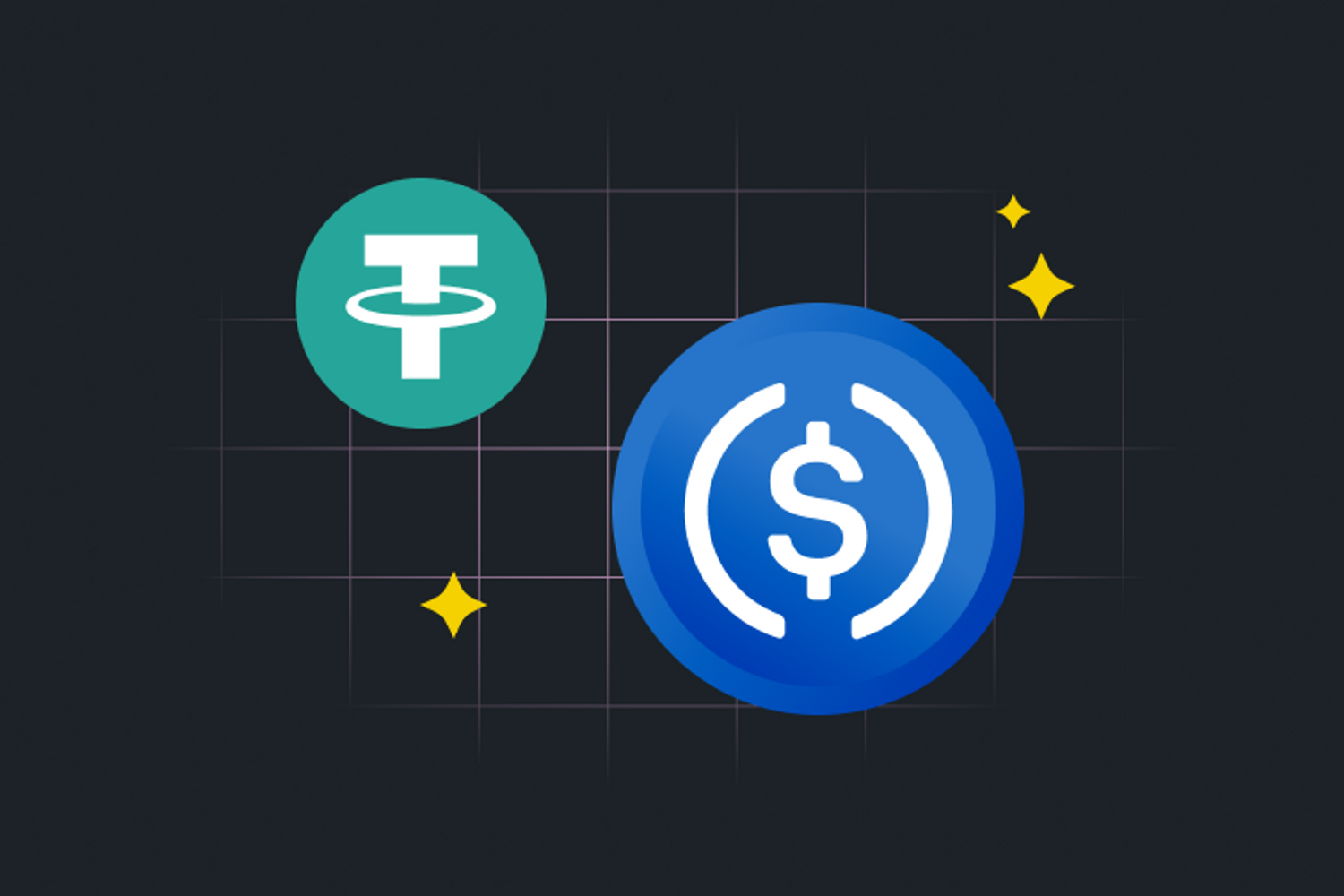Stablecoins Explained
TL;DR
This article covers an integral type of asset in crypto markets: stablecoins. It highlights the role they play in crypto payments and DeFi, and major stablecoins on the Solana blockchain.
- Stablecoins by definition
- Examples of major stablecoins (USDC, USDT)
- Stablecoins in the crypto ecosystem: purchases, payments, DeFi, store of value
- Common types of stablecoins
If you’re new to crypto and web3, you need to know your way around stablecoins.
Stablecoins are cryptocurrencies that maintain a consistent value and price. Most stablecoins are linked in value to fiat currencies like the US Dollar or Euros. For example, while the price of BTC or SOL will fluctuate, stablecoins like USDCoin (USDC) and Tether (USDT) are designed to always remain at $1 USD. Other cryptocurrencies may be more attractive as investments, but stablecoins are incredibly useful as a means of exchange and a store of value. That means they’re great for transferring funds or holding your funds on the blockchain at a stable value.
Because stablecoins are less volatile and more predictable than other cryptocurrencies, they’re an excellent tool for financial transactions of all kinds. Stablecoins are very useful for payments for everyday purchases, and to send funds between people anywhere in the world. They’re also used throughout the DeFi ecosystem. That’s why there is over $100 billion held in stablecoins at any given moment, and millions of people use them every day.
On Solana, the two largest stablecoins are USDC and USDT. Both are US Dollar-pegged tokens, and maintain USD reserves for every stablecoin issued. For example, USDC is backed by the equivalent value of US dollar denominated assets held as reserves by its issuer Circle for the benefit of USDC holders. That means you can hold USDC and be confident that it will maintain its value.
The Role of Stablecoins
Stablecoins for Payments
Crypto has become a popular medium of payments for goods and services. Nowadays, you can pay for pretty much anything with crypto: online shopping, movie tickets, travel — you can even pay your taxes with crypto in Colorado. When paying with crypto, many people prefer to transact in stablecoins because they’re predictable in value and familiar in form.
Internationally, stablecoins are growing fast in use for sending funds to family and friends across borders because they’re faster, more affordable, and more accessible than traditional remittance services that often charge high fees and take days to process transactions. In many countries with unstable economies, cryptocurrency — and stablecoins in particular — have become an increasingly preferable option to maintaining savings in currencies experiencing devaluation and inflation
Today, stablecoins are common on platforms like Shopify, which allows its 2 million online merchants to accept USDC and USDT, in addition to cryptocurrencies like Bitcoin and Solana. Apps like Tiplink allow you to send crypto to anyone, even if they don’t have a wallet. With Decaf, you can buy, send, and receive SOL and stablecoins at Moneygram locations around the world. Stablecoins bring all the utility and familiarity of fiat currencies onto the blockchain, where they provide a steady asset throughout the web3 ecosystem.
Stablecoins in Trading and DeFi
Stablecoins are essential for traders, investors, and anyone engaging with DeFi. Cryptocurrency markets are dynamic, operate 24 hours a day, and can be volatile. Investors and traders use stablecoins as a safe haven against cryptocurrency market volatility. Many people who trade and invest in crypto maintain their holdings denominated in a stablecoin when trading in and out of investments. In addition to SOL, stablecoins like USD Coins are most often used as the common trading pairs in crypto transactions. That means it’s usually easier to trade from one coin to another via SOL or USD.
Stablecoins are also integral to decentralized finance (DeFi) applications, where they are used for lending, borrowing, earning yield, and more advanced DeFi products and services. Getting Started with Decentralized Finance has all the info you need for a deeper dive.
Types of Stablecoins
Most stablecoins are what’s called fiat-collateralized. That means they’re offered by a company that maintains fiat currency reserves — like dollars or gold, for example — equal to the amount of stablecoins issued as crypto. Other stablecoins like DAI use cryptocurrency collateral, and some experimental non-collateralized stablecoins use algorithms to adjust their supply and maintain a stable price.
Stablecoins on Solana
- USDC — A stablecoin pegged at 1 US Dollar, Offered by Circle.
- USDT — Offered by Tether, USDT is pegged at 1 US Dollar.
- UXD — A decentralized stablecoin.
- USDH - A decentralized Stablecoin issued by Hubble.
You can buy and trade stablecoins in the same way you do SOL, BTC, ETH, and any other cryptocurrency: via wallets, exchanges, and throughout the Solana ecosystem. If you need to brush up on how to get onchain with cryptocurrency, read the How to Buy and Trade Crypto explainer.
